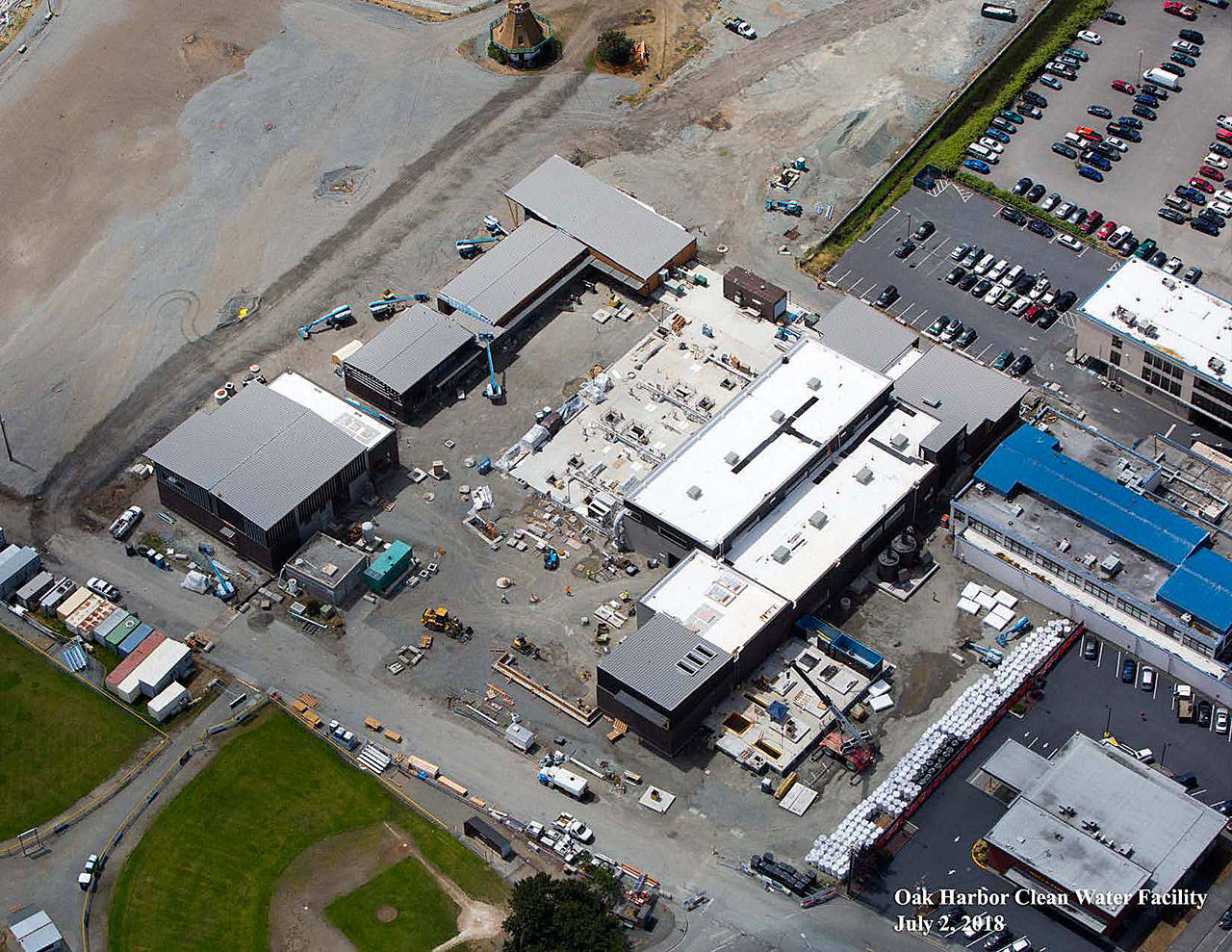The Navy is continuing to explore the possibility of sending its effluent to Oak Harbor’s sewage treatment plant, which is due to be completed later this year.
Navy officials recently submitted a request for quotes to the city, asking for cost and rate information under four scenarios for hooking Navy housing and property into the city’s sewage treatment system.
Earlier this year, Navy and city officials began talks about the possibility.
It was a turnaround from three years ago, when the city offered the Navy the chance to be a partner in constructing the sewage treatment plant, but Navy officials said they were unable to commit to the “proposal’s construction schedule due to financial and acquisition regulations,” according to a statement from Naval Air Station Whidbey Island.
Hooking the Seaplane Base into the system would reduce capacity of the new plant, at least under current technology, Oak Harbor Public Works Director Cathy Rosen said during a workshop Wednesday. But it also has its benefits, she said.
“That has the potential to reduce sewer rates fairly substantially to our existing sewer customers,” she said.
Project engineer Brett Arvidson said he sees it as “a win-win situation.”
The city would work with consultants to create the rate analysis. Rosen said the Navy would reimburse the city for the cost of the consultants if officials decide to go forward with the analysis.
The Navy is in the process of evaluating long-term alternatives for treating sewage on the Navy base. The options, according to city documents, are to continue using the current sewage treatment lagoons on the Seaplane Base, constructing a new Navy-owned treatment plant or connecting to the city’s sewage treatment plant.
The city currently operates the sewage treatment lagoons that treat city and Navy sewage. The lagoons are owned by the Navy and located on the Seaplane Base. Once the city’s new treatment plant comes online at the end of the year, the city will hand those operations over to the Navy.
“We have also been working closely with the City of Oak Harbor to effectively transfer the city’s current wastewater flows from the Seaplane Base to the city’s new plant by the end of the year, efforts that remain on timeline,” according to a statement from the base.
Doubts about the long-term viability of the lagoons, however, was one of the reasons that city officials went forward with constructing the new plant.
Under the request for quotes, the Navy asked for cost information on four scenarios. The city would own the conveyance system on Navy property under two of the scenarios and the Navy would either pay a one-time connection fee or the fee would be amortized over a 20-year period.
Under the other two other scenarios, the Navy would own the conveyance system on Navy property and pay for connection either as a one-time fee or over 20 years.
Councilman Bill Larsen said he would prefer one of the latter options.
“I don’t see any benefit from us doing construction on Navy property at all,” he said.
Councilman Joel Servatius said he hoped the analysis would take into account the lost capacity of the plant if the Navy hooks in. He said it was built as a 50- to 60-year facility.
“I don’t want to take that asset and turn it into a 30- or 40-year asset,” he said.
Arvidson said the consultants will indeed consider that when coming up with the rate analysis.



